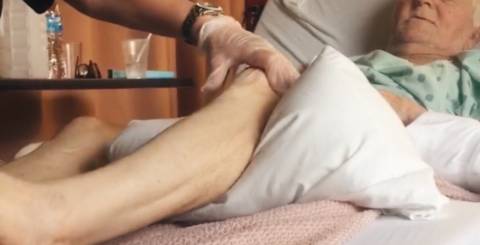Misconceptions About Inpatient Rehabilitation

Inpatient rehabilitation provides comprehensive and intensive inpatient rehabilitation and ongoing medical management to patients with functional impairments following disabling illnesses and injuries. Patients are most likely referred to these facilities by their doctors and oftentimes have hesitancy because of the many misconceptions about rehabilitation programs. Let's take a look at the misconceptions and help clarify the truths.
- Misconception 1-Patients can stay for many months.
The average length of stay is around two weeks. It all depends on your injury and what your rehabilitation plan is. This average includes patients who have had massive injuries such as strokes, severe traumatic brain injuries, and new spinal cord injuries. Those types of injuries usually involve a longer stay. A patient who has suffered from pneumonia or fracture may have a significantly shorter length of stay.
- Misconception 2- Patients will be 100% back to normal when they leave rehab.
Some patients may regain their full functional independence by the time they are discharged, but many do not. Many have to learn a new way of doing things in their day-to-day life. The rehabilitation teams work hard with each patient to develop goals that are based on the diagnosis and these goals continue after a patient is discharged.
- Misconception 3- Rehabilitation facilities don't accept admission on weekends or holidays.
This can be partly true. Some facilities do not while others do. This depends on staffing and the type of rehabilitation the facility offers. Many times referrals to a rehabilitation facility are planned in advance to avoid these types of issues.
- Misconception 4- It is cheaper to send someone to a rehabilitation center than to keep them in a medical or surgical unit.
All of these things are expensive. Providing one on one therapy daily is costly for each patient. Inpatient rehabilitation is cost-effective if the patient needs the rehabilitation and is expected to gain functionality from these therapies.
- Misconception 5- Medicare patients must have 3-day hospitalizations before transferring to an inpatient rehabilitation facility.
As a patient you must have qualifying hospitalization records of three or more days before your care in a facility is covered but this does not apply to inpatient rehabilitation, it applies to skilled nursing facilities. Patients can be admitted at any time once they are medically able to participate and benefit from the therapy programs.
- Misconception 6- Inpatient rehabilitation facilities are good places to send those with drug and alcohol problems.
Inpatient rehabilitation facilities are not drug and alcohol rehabs. The only reason a patient would be admitted with these problems would be if they have sustained an illness while intoxicated that gives them the need for additional therapies.
- Misconception 7- The right time to admit the patient for rehabilitation is always when the hospital team is ready to discharge them.
Most rehabilitation facilities go to great lengths to admit patients quickly. There are circumstances where a patient's ability or willingness to admit may not align with the plans of the discharging service.
- Misconception 8- Rehabilitation is a great place to complete medical work that was not completed while in the hospital.
All necessary medical work-up should always be done before transferring to rehab. The only reason this wouldn't be done is if something can wait and be done as an outpatient situation.
- Misconception 10- Inpatient rehabilitation is depressing for the patient.
One of the main focus points of rehabilitation hospitals is the mental health of the patient and the main approach to every aspect is to keep their spirits high. Rehab is where patients do to help improve their already improving conditions and help them regain their independence. This can be met with tears and times, but there is always someone there to uplift and inspire the patient as they are overcoming their obstacles to achieve their goals. Inpatient rehabilitation is one of the best resources for a patient in recovery. It provides comprehensive and intensive inpatient rehabilitation and ongoing medical management to patients with functional impairments following disabling illnesses and injuries.
Similar Articles
Knee pain affects millions of people around the world. It can make daily activities difficult and impact your quality of life. Knee discomfort can be caused by injuries, chronic conditions, or overuse.
If your knees have recently started sounding like a bowl of Rice Krispies (snap, crackle, pop!) every time you stand up, congratulations — you're officially living the adult experience.
Search engine optimization (SEO) may help physical therapists improve their online exposure and drive more visitors to their website.
You're sitting at home with two completely different treatment plans from two doctors you trust.
When conservative therapy fails, surgery may be required to alleviate chronic foot or ankle discomfort.
Your body changes with time - muscles and bones shift, ligaments loosen, and circulation may slow. Unfortunately, the aging process has an impact on our feet as well.
Back problems aren't just discomfort or temporary back pain. Many of them can be extremely dangerous and lead to serious complications if you don't seek medical attention on time.
Sciatica is a condition in which the sciatic nerve, the longest nerve in the human body, becomes irritated or pinched
Irritable bowel syndrome (IBS) is a dysfunction of the gastrointestinal tract that manifests as abdominal pain, bloating, flatulence, and intestinal discomfort (constipation, diarrhea, or a combination of both.









